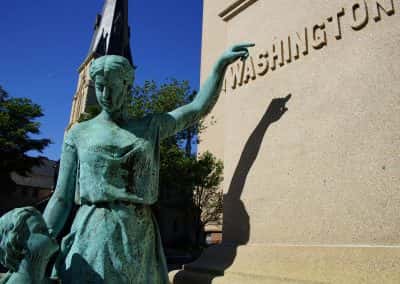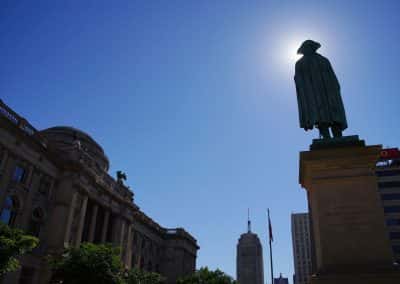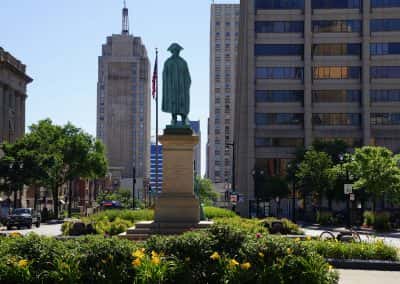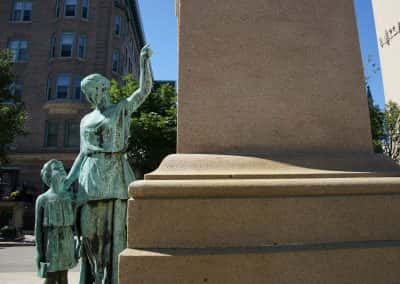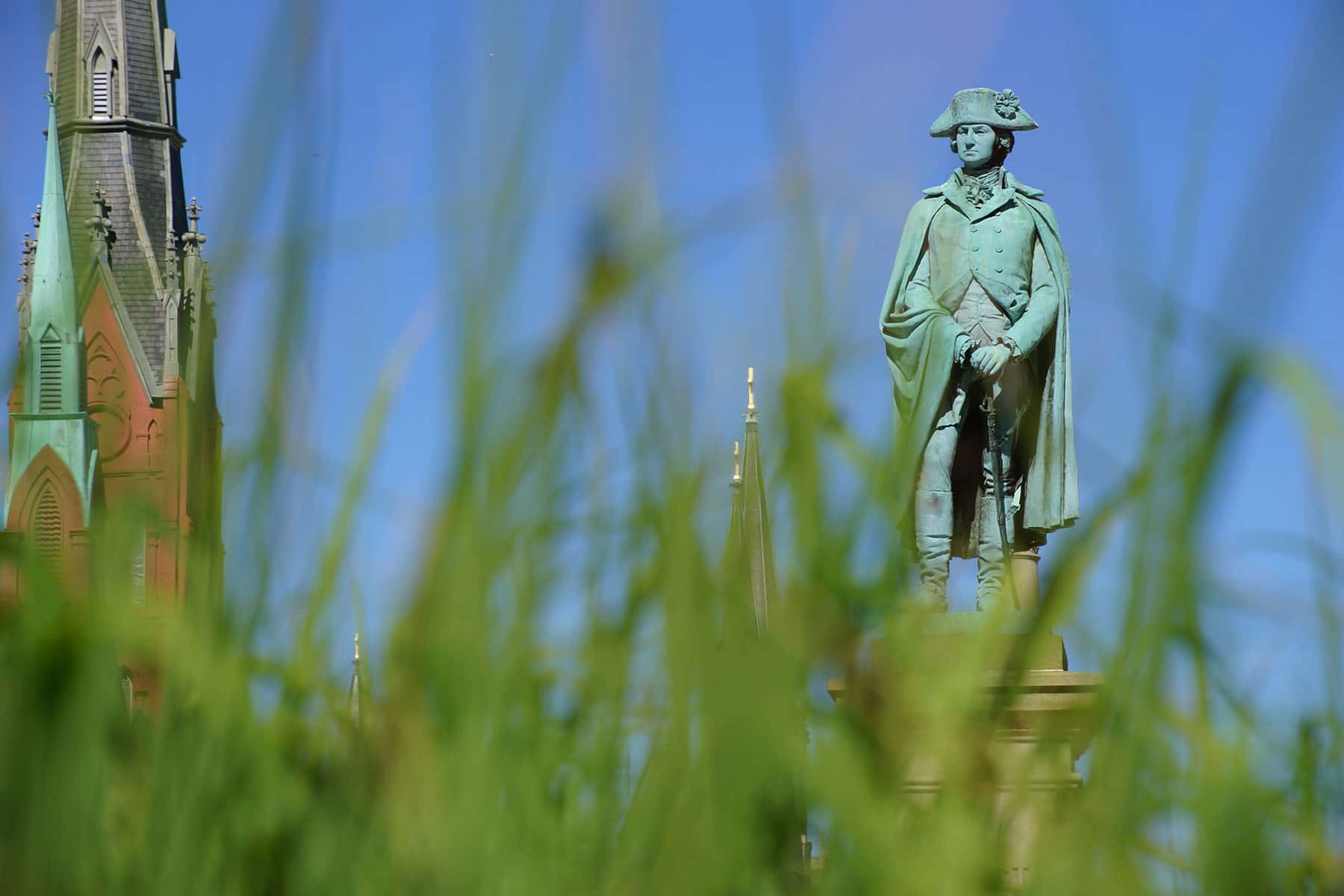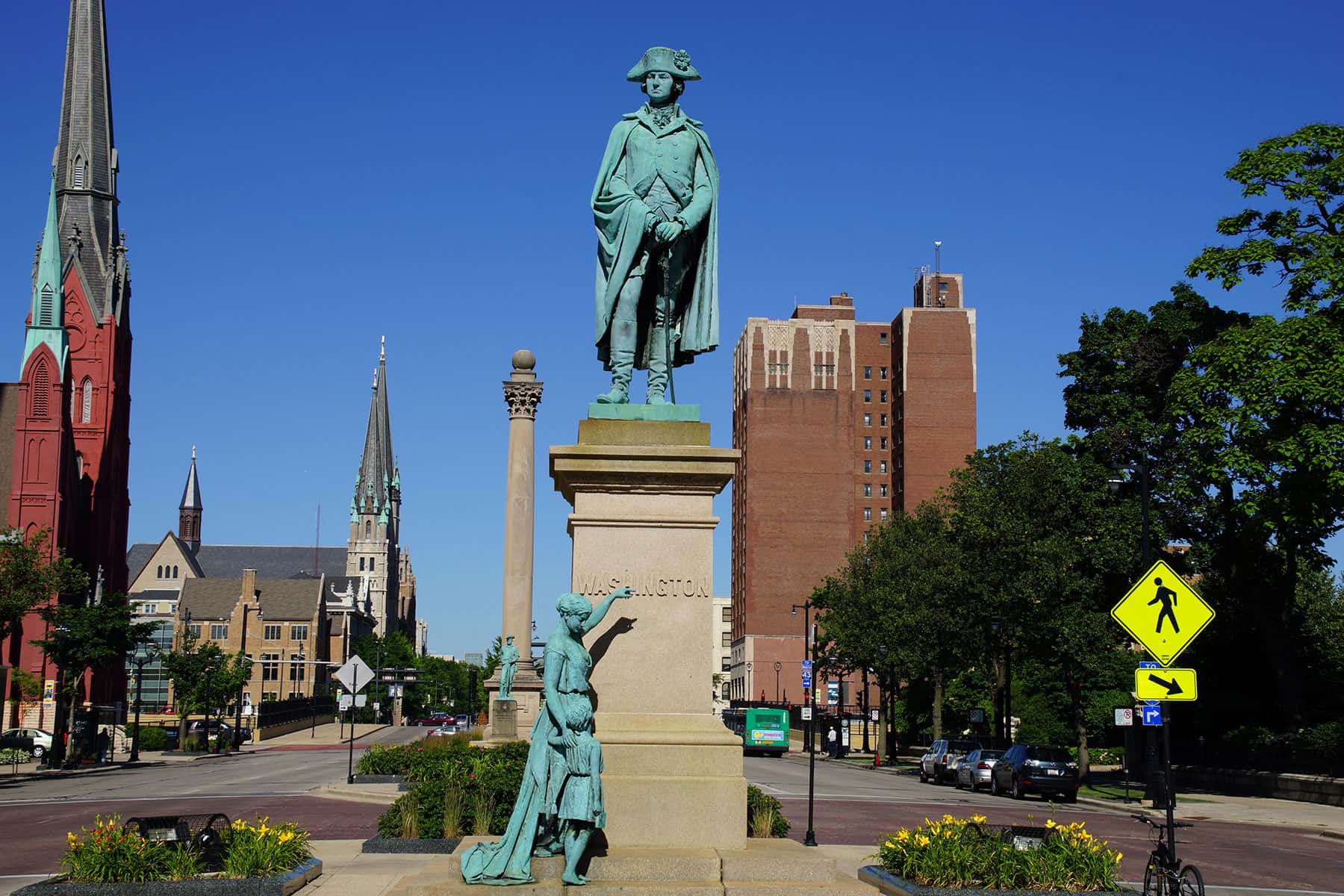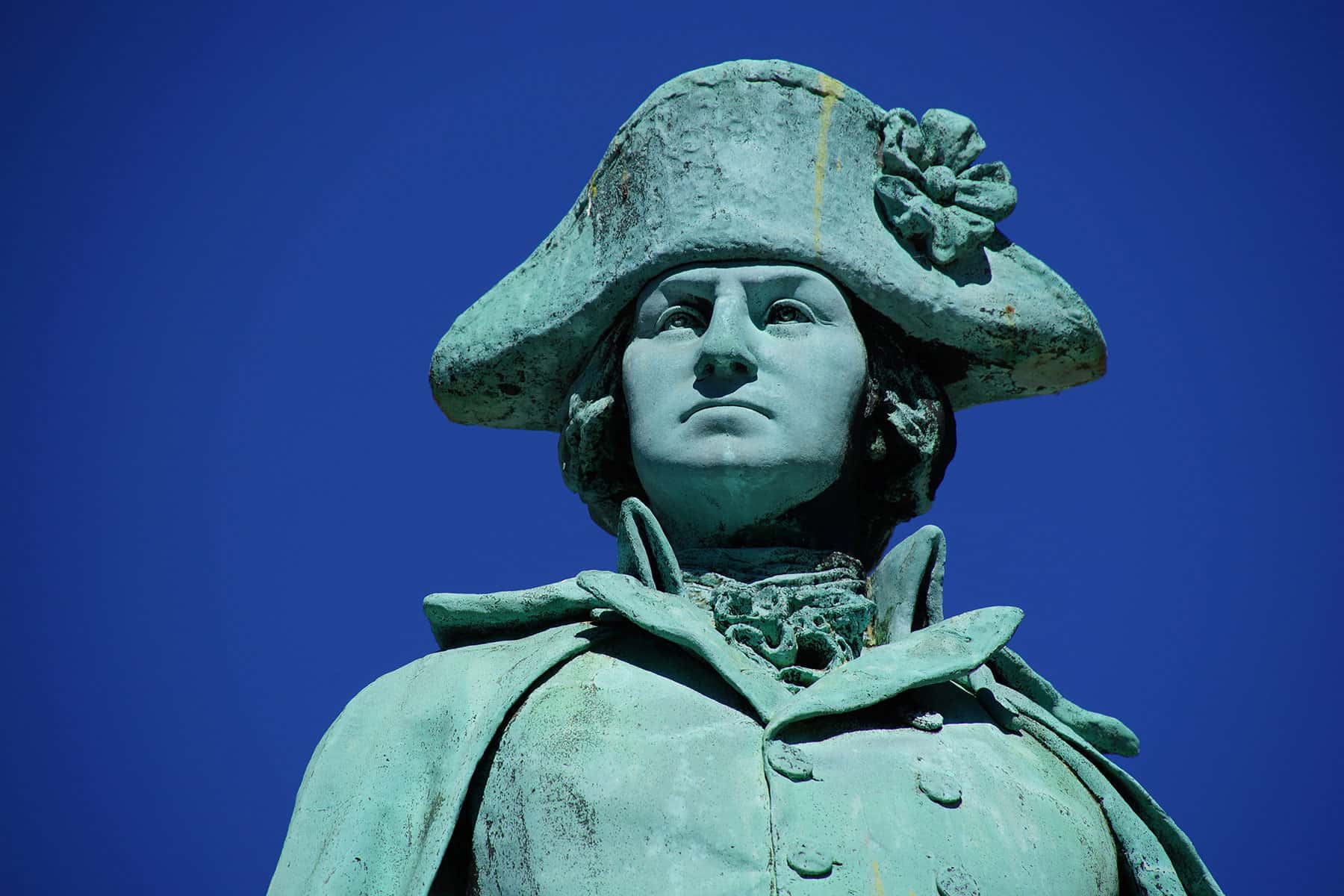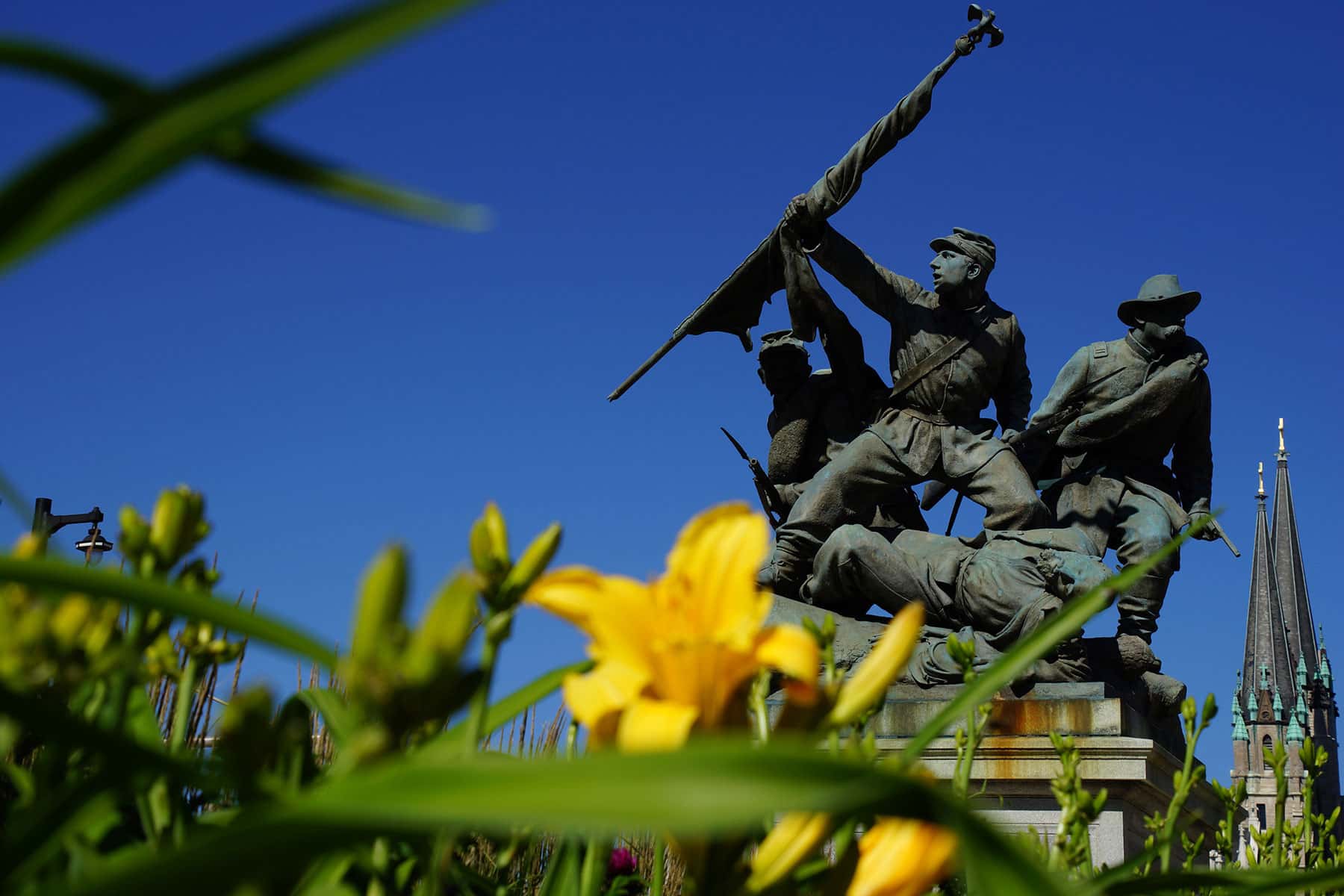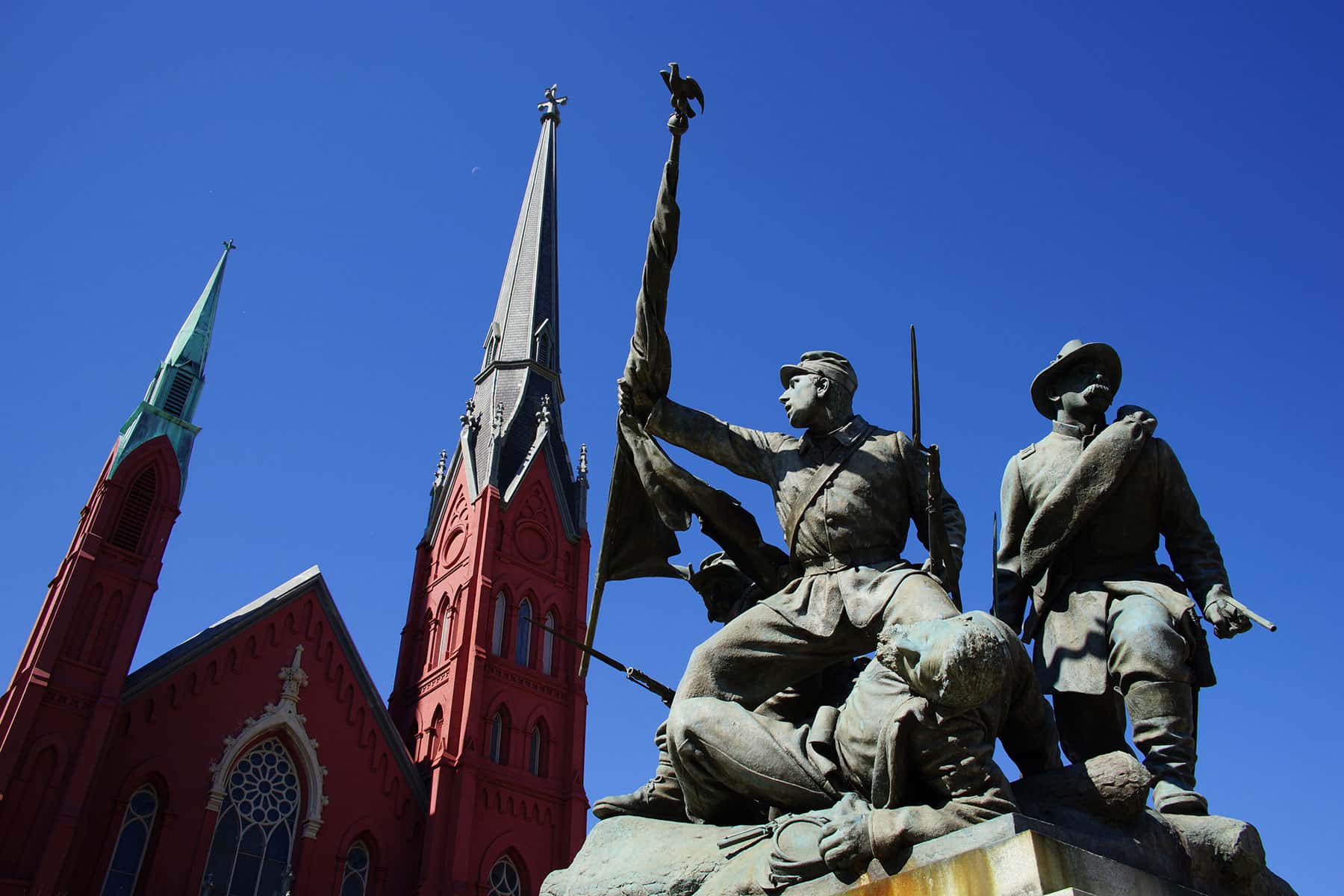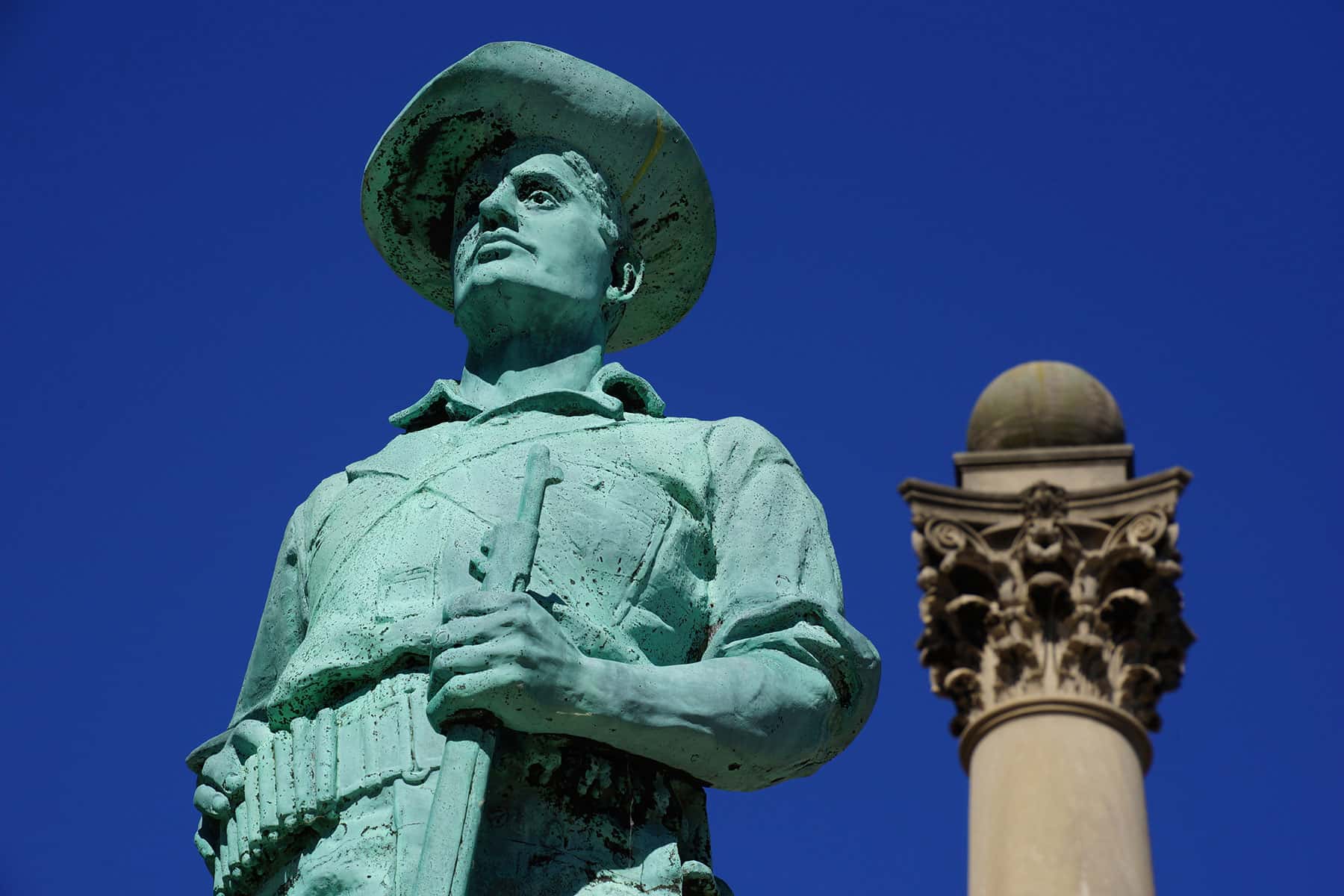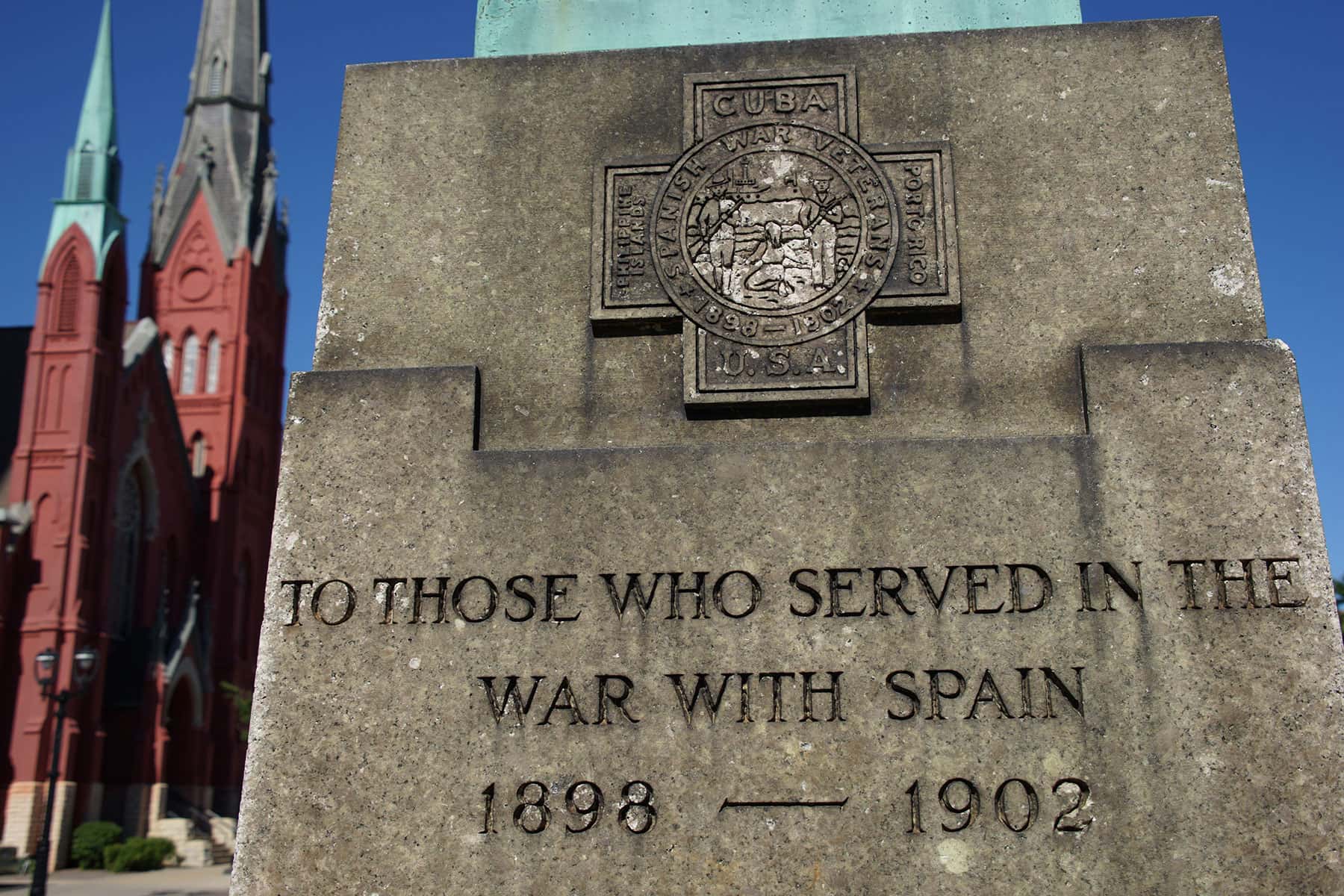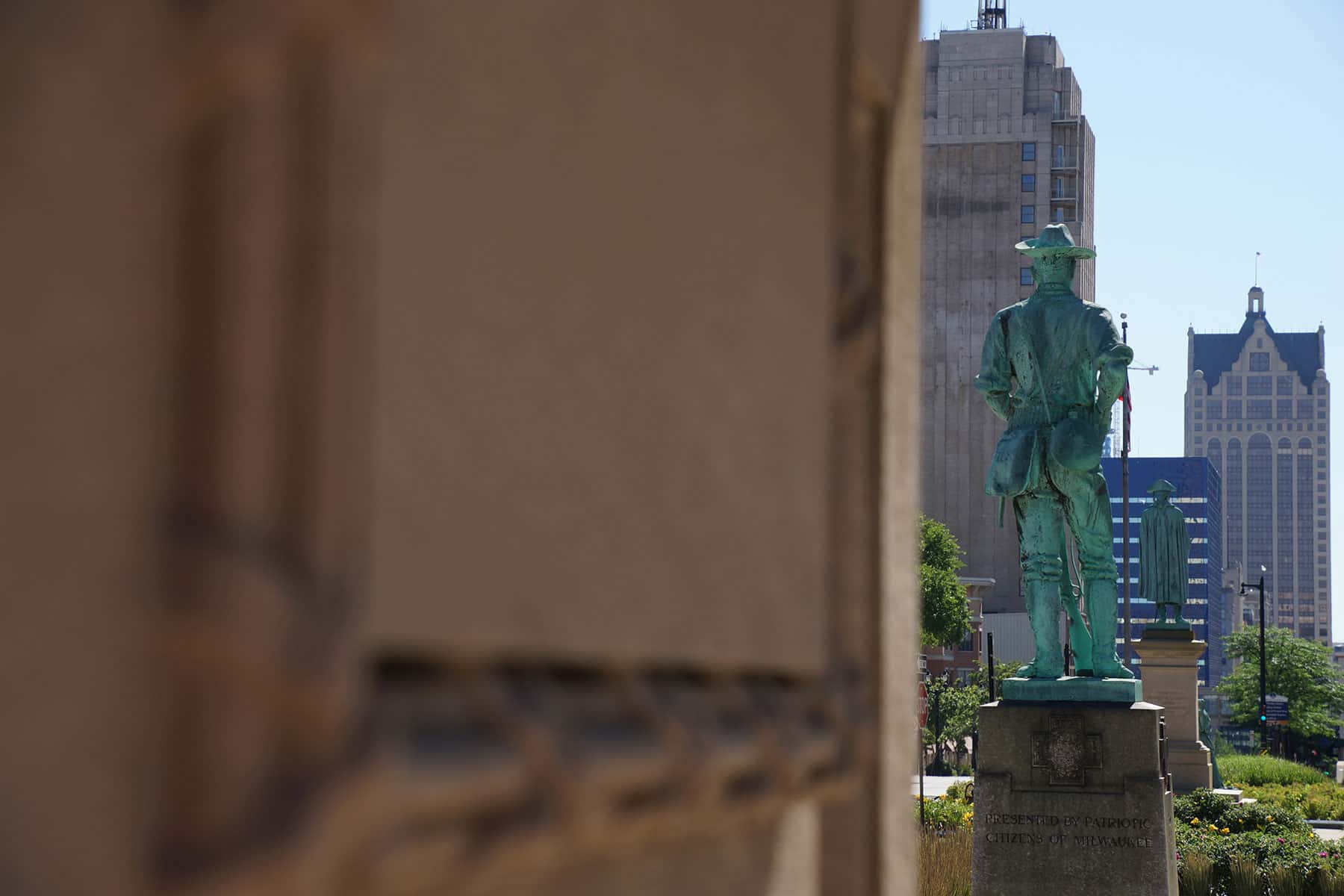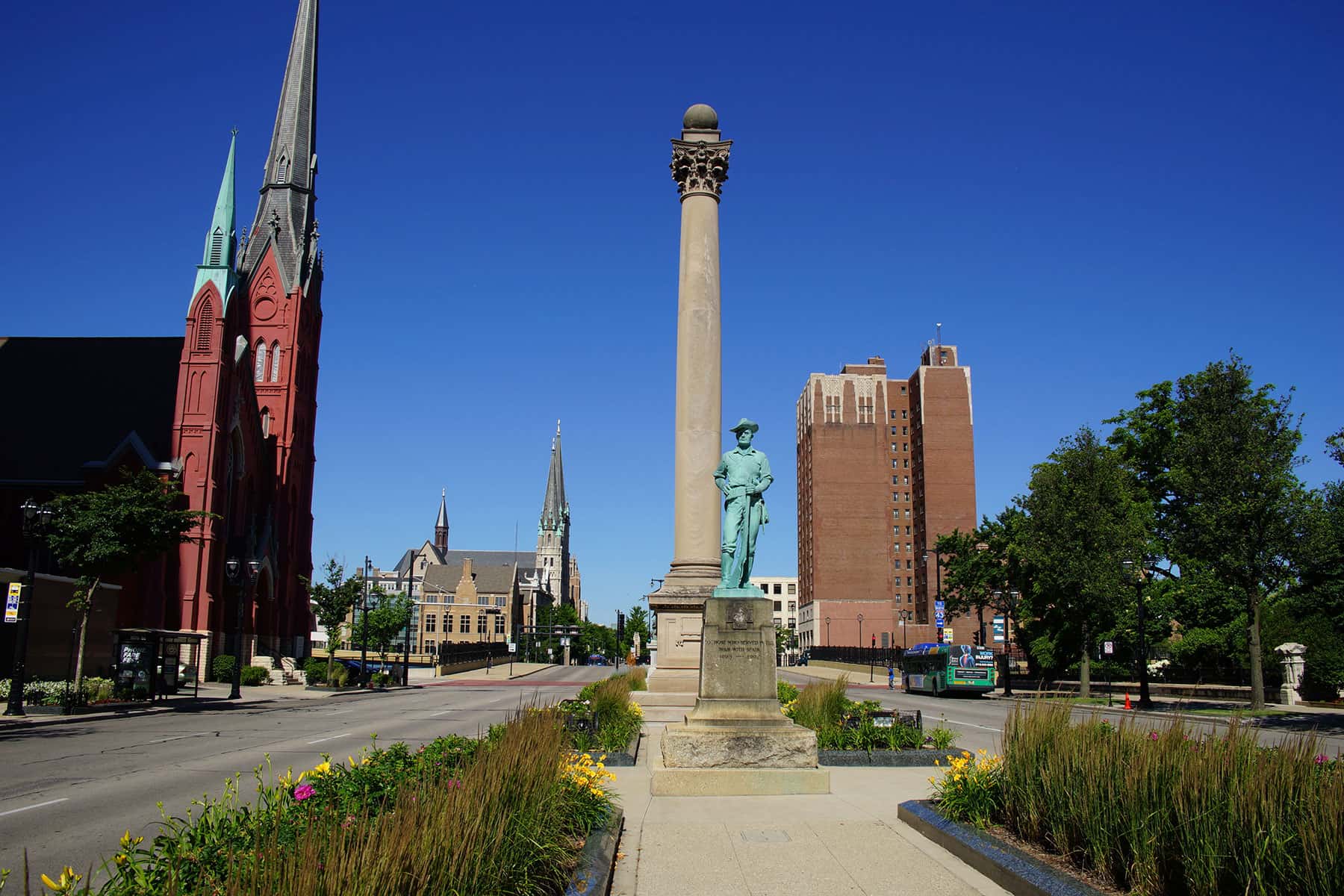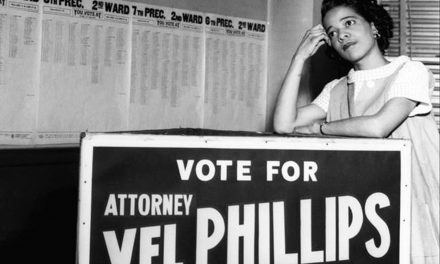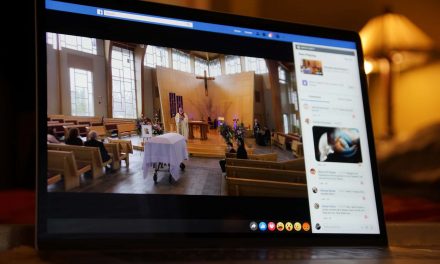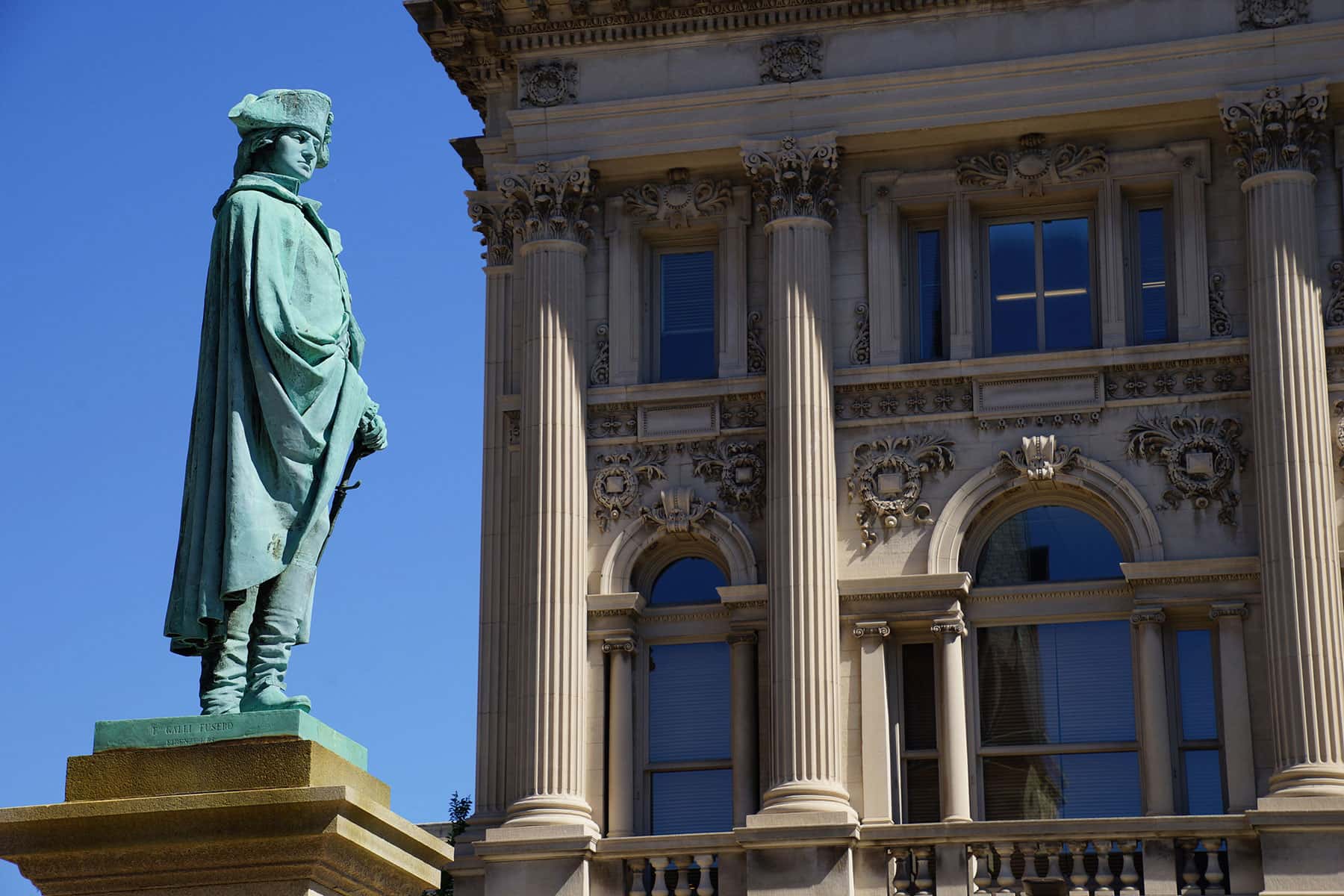
Q&A
Q: What led to your interest to identify and restore outdoor monuments in Milwaukee?
A: I became interested in identifying and conserving works of art in Milwaukee after our family returned from a year in London, England. In Europe, historic sculptures are everywhere in the environment. I spent considerable time looking and reflection on sculptures in England, so after our return to Milwaukee I realized I had been driving past local sculptures here without really looking at them. With a background in museum education, and not being a Milwaukee native, I thought it would be an interesting project to find out more about Milwaukee sculptures and their history. I found a collaborator, Virginia Palmer, who has a deep background and interest in local history. Together we wrote the book, Outdoor Sculpture in Milwaukee, published by the State Historical Society of Wisconsin in 1995.
Q: What is the status of your “Dirty Dozen” list, specifically regarding the Spanish American War Hero, George Washington, and Frederick von Steuben monuments?
A: In late 1995 I was hired by the City of Milwaukee to direct a program with the Smithsonian Institution to identify, assess, and record all the outdoor sculpture in Southeast Wisconsin. I trained volunteers who went out to do this work. We recorded the condition of over 200 sculptures in the landscape. These records are part of a national program the Smithsonian led in the 1990, collected in their Washington DC database. In Milwaukee Central Library holds copies of the local efforts. From that data we selected twelve historic sculptures that badly needed conservation, “The Dirty Dozen.” To date, nine of the sculptures on this list have been conserved.
The Smithsonian Institution funding ended in the late 1990s. I have continued to work as a volunteer to have the sculptures restored to their original glory while, attempting to educate Milwaukeeans on the importance of these objects. Most of the historic sculptures are bronze. Therefore, professional conservators with backgrounds in metallurgy need to be hired. My method to do this is to identify the monument’s stakeholders and to form a fund raising committee of volunteers to consider steps toward restoration. Currently there is no local or national government program toward restoration of historic sculptures.
Q: What is the biggest lesson you have learned in your efforts over the past two decades to preserve Milwaukee’s landmark statues?
A: The biggest lesson I have learned in these efforts is most people are not aware of the identity or history about a work of public art, even if it they pass the sculpture daily. In convincing folks that a specific work is important, besides its history, I use the analogy of an automobile. If you have a fine car you must wash and wax it. But if it becomes an old car, a classic or vintage model, it will need to be restored.”
Q: What was Milwaukee’s connection to Washington and the Spanish-American War that led to those sculptures, instead of other figures or events?
A: I am working with Westown and a volunteer committee to restore two of the Dirty Dozen in the Court of Honor on West Wisconsin Avenue between 9th and 10th Streets, George Washington and Spanish American War Hero. Another monumental bronze is in this green boulevard, The Victorious Charge, a Civil War monument conserved in 2003. The committee’s goal is to raise $100,000 for the restoration of the two monuments, and the cleaning and waxing of the Civil War monument. To date we have raised half that amount. George Washington which was the first public sculpture in Milwaukee, erected in 1885. It will be removed in July to be transported to Chicago for conservation and then returned next spring.
That bronze is one of my favorites because it was given to the City of Milwaukee by Elizabeth Plankinton, and the super realistic bronze shows Washington as a forty-three years old, wearing the uniform of the Commander-in-Chief of the Continental Army, with a mother and child in classical dress, pointing to the name Washington on the pedestal.
When Plankinton gifted the work of art, the City of Milwaukee was full of immigrants. She wanted the newly arrived citizens to understand the attributes and importance of the Father of Our Country. After 131 years of standing in the center of the busiest street in the city, all three of the bronzes in this group are in poor condition.
Spanish American War Soldier was erected in 1932, after the thirty-fourth annual national encampment of the Veterans of the Spanish-American War took place in Milwaukee. The Veterans donated the funds to erect the work which was crafted by a local artist, Frederick Koenig. Another pouring of this bronze stands on the grounds of the Veterans Administration complex off of National Avenue.
Q: For the 12 sculptures on your list, do you have the financial figures for what they originally cost to build and the expense of modern restoration?
A: The original costs of few of the historic sculptures can be found, but the restoration costs are almost always between $50,000 and $150,000 depending on the size and condition. This is much more than the original costs of 19th and early 20th Century works.
Q: How important are these sculptures to the communities or neighborhoods where they exist?
A: Even at the high cost I feel neighborhoods or ethnic groups that work to have the sculptures restored are satisfied, because it brings together a group who strive to do something for their community. They appreciate the work that goes into a sculpture. Committees sometimes have annual events at the sculpture they have restored or feature the work of art in their newsletters. The Sons of Norway, Sons of the Civil War, and Polanka are examples of these organizations.
Q: Is there an amusing story about one of the historic sculptures that is little known by the public?
A: One story I like to tell is about the Court of Honor. It originally stood closer to Marquette University. When the freeway cut through West Wisconsin Avenue, the works in the Court of Honor were moved east to where they are now. This was in the early 1960s when there was not much information about handling sculpture. The City of Milwaukee’s workers did their best but made a very big mistake. They poured concrete inside the center of all three of the works of art in the Court of Honor. I am guessing this was done to stabilize the works. They must not have understood that each bronze figure had iron armatures for interior stability.
Q: Which Milwaukee sculpture is most special to you personally?
A: My favorite public art is Wind Leaves on the Lakefront in front of Discovery World at Pier Wisconsin. Crafted in 2006 by Californian, Ned Kahn, the sculptures consists of seven 26-foot wind animated sculptures shaped like huge leaves, with their surfaces covered with thousands of stainless steel discs rippling in the wind. At the base of each sculpture, visitors can rotate the leaves by using hand wheels. There are also hardwood benches for folks to sit on or play with mallets, like a xylophone. Additionally, there is a pebble chime that visitors can also interact with. This kinetic sculpture complex brings smiles to thousands of children and adults, besides teaching a bit about the wind and its changes.
Q: Do you have any message for the Milwaukee public about historical preservation issues?
A: Today I am not advocating for more public art in the environment unless the government and individuals are willing to understand the long term commitment to artist and their work. The preservation movement in Milwaukee and the United States is in its infancy compared to Europe. The government and organizations here in this city need to support the preservation of sculptures besides the commitment they have to the preservation of buildings.
Monuments for Restoration
Two of the three bronze monuments that stand in the Court of Honor show the ravages of time and deterioration. The improvements need to made in order for the boulevard to remain relevant to the 21st century.
George Washington
Milwaukee’s first monument was given to the City by Elizabeth Plankinton in 1885. A bronze of George Washington shows the hero standing tall on a granite pedestal in his uniform as Commander in Chief of the Continental Army. The sculptor, Richard Henry Park (1832-1902) became a popular artist for Milwaukee’s elite early in his career. Unfortunately, today the surface of the bronze is covered with dirt and corrosion. The pedestal includes the word Washington and standing at the pedestal base is a mother with a child, both dressed in 19th century dress. The mother is pointing to the inscription as a lesson for the child. Yet, the mother is missing the back of her head and both she and the child are disfigured with black corrosion.
Spanish–American War Hero
The second monument in dire need of restoration is the Spanish-American War Hero. This bronze captures the image of a foot soldier dressed in a campaign hat, kit bag and khaki uniform. In 1932, the thirty-fourth annual national encampment of Spanish-American War veterans took place in Milwaukee. Local newspapers claimed Milwaukee to be the first city to erect a memorial to soldiers of the war with Spain without outside help. In 2014, however, the sculpture is covered with eighty years of dirt, dust and corrosion.
Civil War Monument
The Victorious Charge was created by American artist John S. Conway and dedicated in 1898. This bronze sculpture is 9’10” high and sits on a 20′ square granite pedestal. This monument depicts four Union soldiers cast in bronze, caught in action and moving forward to victory. Although the Victorious Charge was fully restored during the 1990’s, it too is in need of cleaning and some minor restoration work today.

